Evolutionary Ecology
The department of Evolutionary Ecology gathers complementary skills in behavioural ecology, population dynamics, population biology, community ecology, and methodology (statistics and modelling). The research done in the department aims at studying how animal species evolve in a changing world by understanding the causes of the evolution of traits, adaptations and interactions. For that, we consider different levels of organization from individuals to populations and communities. Because organisms cannot be considered isolated from other biotic factors, we consider pathogens but also competing species within communities.
We study how individuals adapt to their environments that are largely impacted by anthropic pressures, and how life history traits and behaviour evolve in response to these pressures. Although we mainly focus on phenotype, we more and more consider the mechanistic link between the genotype and the phenotype. We develop the theoretical framework of our discipline through a conceptual and modeling approach. In parallel, we test hypotheses that arise from theoretical predictions through experimental, comparative and observational approaches on different biological models (insects, birds, mammals). Experimental approaches are developed in the laboratory (insect model) and in natura (bird, insect and mammal models). Observational and comparative research is mainly concerned with vertebrates. Our approaches are also, and increasingly, interested in the mechanisms of adaptive responses. In addition to the classical approaches of demographic analysis and trait change, methods of ecophysiology, chemical ecology and molecular biology are used.
Our department hosts several long-term studies of wild populations of different species. These long-term studies offer a valuable way to understand how biotic and abiotic factors affect individuals’ life history traits, and the functioning of populations in natura. Five populations of mammalian species are thus monitored for several years (more than 40 years on roe deer, 30 on Alpine marmots, 25 years on cats, 16 years on zebras, and 20 years on impala). Two of our study sites (La Sassière in Vanoise National Park (Alpine marmots) and Hwange National Park) have been certified as “Site d’Etude en Ecologie Globale” (SEEG), and two (ZA “Hwange” and ZA “Antarctic and sub-Antarctic”) were certified as “Zone Atelier” by the CNRS.
The department of Evolutionary ecology is also largely involved in training activities. Lastly, we also have strong socio-economic relationships. Indeed, because we address questions of major societal interest (global warming, public health) we tightly collaborate with socio-economic partners (Office Français de la Biodiversité, Vanoise National Park, Hwange National Park in Zimbabwe, Office National des Forêts, etc.) and participate to general public and media events.
Publications
Display of 2221 to 2250 publications on 2449 in total
Matching data sets from two different spatial samples
Journal of Vegetation Science . 13 : 867-874
Journal article
see the publicationSex- and age-dependent effects of population density on life history traits of Red deer (Cervus elaphus) in a temperate forest.
Ecography . 25 : 446-458
Journal article
see the publicationVariable modes of inheritance of morphometrical traits in hybrids between Drosophila melanogaster and Drosophila simulans
Proceedings of the Royal Society B: Biological Sciences . 269 : 127-135
Journal article
see the publicationUse and misuse of correspondence analysis in codon usage studies
Nucleic Acids Research . 30 : 4548-4555
Journal article
see the publicationHost Patch Selection Induced by Parasitism: Basic Reproduction Ratio R0 and Optimal Virulence
Theoretical Population Biology . 62 : 97-109
Journal article
see the publicationModeling the Lag Time of Listeria monocytogenes from Viable Count Enumeration and Optical Density Data
Applied and Environmental Microbiology . 68 : 5816-5825
Journal article
see the publicationAsymmetric directional mutation pressures in bacteria
Genome Biology . 26 : 1-14
Journal article
see the publicationResource limitation in natural populations of phytophagous insects. A long-term study case with the chestnut weevil
Acta Oecologica . 23 : 31-39
Journal article
see the publicationEffects of annual rainfall and habitat types on the body mass of impala (Aepyceros melampus) in the Zambezi Valley, Zimbabwe
African Journal of Ecology . 40 : 186-193
Journal article
see the publicationVariations in adult body mass in roe deer: the effects of population density at birth and of habitat quality
Proceedings of the Royal Society B: Biological Sciences . 269 : 747-753
Journal article
see the publicationGeographic distribution of Triatoma dimidiata and transmission dynamics of Trypanosoma cruzi in the Yucatan peninsula Mexico
American Journal of Tropical Medicine and Hygiene . 67 : 176-183
Journal article
see the publicationThe diet of feral cats (Felis catus L.) at five sites on the Grande Terre, Kerguelen archipelago
Polar Biology . 25 : 833-837
Journal article
see the publicationSpatio-temporal variation in cat population density in a sub-Antarctic environment
Polar Biology . 25 : 90-95
Journal article
see the publicationGeographical and seasonal differences in morphology and dynamics of the coccolithophore Calcidiscus leptoporus
Marine Micropaleontology . 46 : 363-385
Journal article
see the publicationInfluence of biotic and abiotic environment on dental size and shape evolution in a Late Miocene lineage of murine rodents (Teruel Basin Spain)
Palaeogeography, Palaeoclimatology, Palaeoecology . 184 : 163-175
Journal article
see the publicationPublic information and breeding habitat selection in a wild bird population
Science . 297 : 1168-1170
Journal article
see the publicationWithin-plot relationships between tree species occurrences and hydrological soil constraints: an example in French Guiana investigated through canonical correlation analysis
Plant Ecology . 162 : 143-156
Journal article
see the publicationSerosurvey for Newcastle disease and avian influenza A virus antibodies in great cormorants from France.
Journal of wildlife diseases . -- : 169-171
Journal article
see the publicationMale sterility thermal threshold in Drosophila: D. simulans appears more cold-adapted than its sibling D. melanogaster
Genetica . 114 : 195-205
Journal article
see the publicationPhenotypic plasticity of adult size and pigmentation in Drosophila : thermosensitive periods during development in two sibling species
Journal of Thermal Biology . 26 : 351-361
Journal article
see the publicationPhenotypic plasticity of body pigmentation in Drosophila: influence of a developmental thermoperiodic regime in two sibling species
Physiological Entomology . 27 : 124-135
Journal article
see the publicationA mathematical method for determining genome divergence and species delineation using AFLP
International Journal of Systematic and Evolutionary Microbiology . 52 : 573-586
Journal article
see the publicationA mathematical method for determining genome divergence and species delineation using AFLP
International Journal of Systematic and Evolutionary Microbiology . 52 : 573-586
Journal article
see the publicationPhylogeny of the genus Apodemus with a special emphasis on the subgenus Sylvaemus using the nuclear IRBP gene and two mitochondrial markers: cytochrome b and 12S rRNA
Molecular Phylogenetics and Evolution . 23 ( 2 ) : 123-136
Journal article
see the publicationCHILL-COMA TOLERANCE, A MAJOR CLIMATIC ADAPTATION AMONG DROSOPHILA SPECIES
Evolution - International Journal of Organic Evolution . 55 ( 5 ) : 1063-1068
Journal article
see the publicationLOCOMOTOR PERFORMANCE OF DROSOPHILA MELANOGASTER: INTERACTIONS AMONG DEVELOPMENTAL AND ADULT TEMPERATURES, AGE, AND GEOGRAPHY
Evolution - International Journal of Organic Evolution . 55 ( 1 ) : 205-209
Journal article
see the publicationMale and female agonistic and affiliative relationships in a social group of farm cats (Felis catus L.)
Behavioural Processes . 53 : 137-143
Journal article
see the publicationEstimation of the Web's capture thread lenght in orb-weaving spiders: determining the most efficient formula.
Annals of the Entomological Society of America . 94 : 490--496
Journal article
see the publicationExperimental and theoretical evaluation of typing methods based upon random amplification of genomic restriction fragments (AFLP) for bacterial population genetics
Genetics Selection Evolution . 33 : S319-S338
Journal article
see the publicationEstimation of the Web`s capture thread lenght in orb-weaving spiders: determining the most efficient formula.
Annals of the Entomological Society of America . 94 : 490-496
Journal article
see the publication
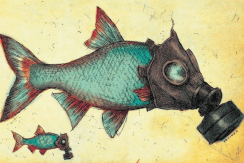
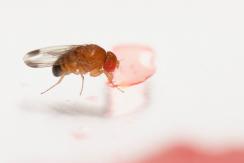
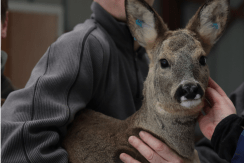
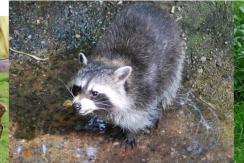
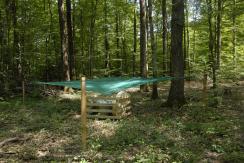
You also, comment on this article